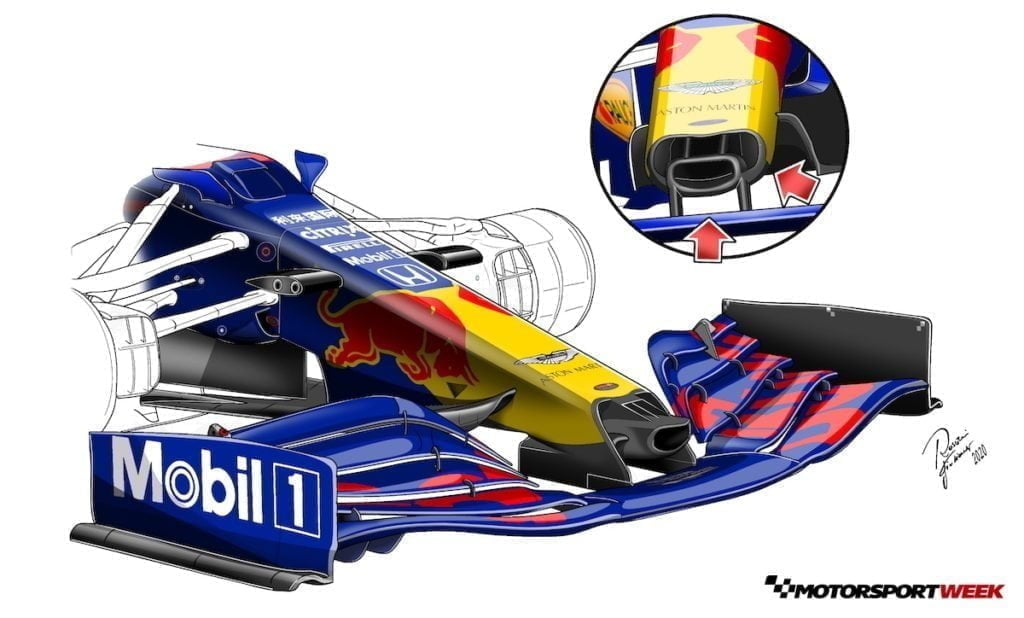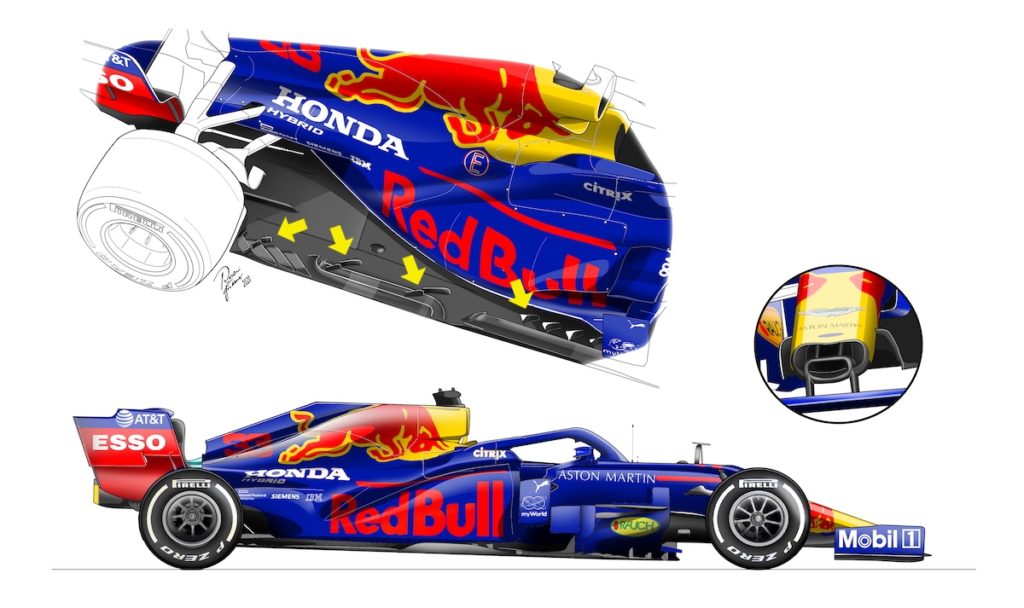The first race of the delayed 2020 season was a disappointment for Red Bull’s RB16, which looked set to promise so much based off its predecessor last year and the Barcelona pre-season tests in February, where it frequently bothered Mercedes.
The RB16 in Austria was by no means slow and looks firmly cemented as the second-quickest car, but it remains behind the Mercedes W11 by around half a second, and that’s on one of the shortest tracks on the calendar with a laptime of just over a minute.
Analysing the car from a technical viewpoint it almost seems immature and also fragile in terms of reliability – but this is nothing new. We know that Adrian Newey’s cars have always been subject to frequent failures, since the British designer tries to push the extremes.
Newey and his team also tend to lay out a solid aerodynamic base before developing it throughout the season, with wins often coming in the second half – though with a shorter season this strategy perhaps won’t pay off.
The RB16 seems to have a lot of room for improvement and we’ve yet to see its true capability after Max Verstappen retired from second place, whilst team-mate Alex Albon came together with Lewis Hamilton and held the belief the race win was his for the taking prior to that.

From a technical point of view, there were few aerodynamic innovations on the car last weekend, with Newey continuing to take the Mercedes as a reference to develop the Red Bull. In this regard, a new nose appeared on the RB16 with narrower pylons, very similar to that of the W11.
The new nose aims to increase the speed of the air flowing through the cape and under the floor. The updated nose was tested during free practice, and then confirmed in official qualifying and race sessions – although it was only available to Verstappen after the Dutchman damaged his version in practice and was then given Albon’s version, with the Anglo-Thai racer reverting to the previous spec run during testing.

A new floor was also used on the RB16, with a series of vortex generators placed in the direction of the rear wheels. These deviators are useful for the generation of vortices that help to clean the air from the rear tyres, reducing resistance and improving the fluid dynamics of the car.
The rear tyre is a real obstacle for aerodynamics and with its rotation it generates harmful vortices that increase exponentially with increasing speed. This series of flow diverters helps to prevent these harmful vortices.









